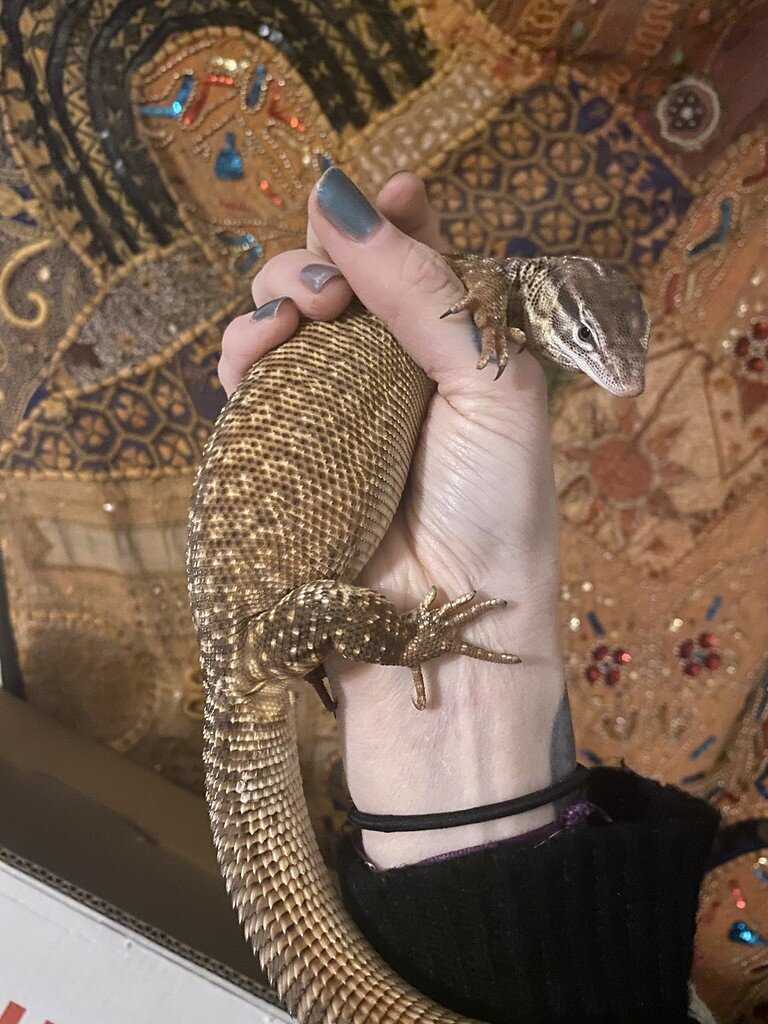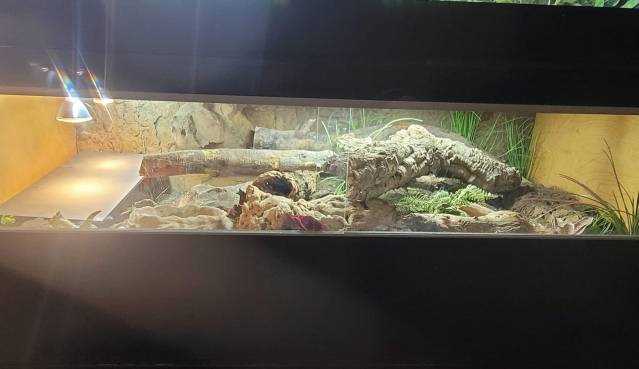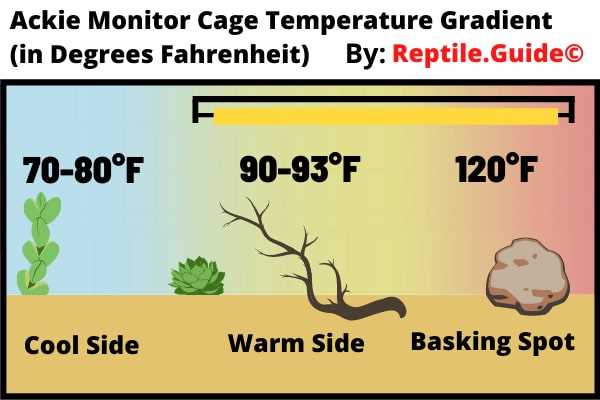If you are considering getting an ackie monitor as a pet, it is crucial to create an enclosure that provides an optimal habitat for their well-being. One of the most crucial factors to consider when setting up their enclosure is the size. The size of the enclosure plays a vital role in ensuring that your ackie monitor can thrive and live a healthy and fulfilling life.
Providing a large enclosure for your ackie monitor not only enhances their physical health but also promotes their mental well-being. With enough space to roam, these monitors can engage in natural behaviors, such as burrowing in the substrate, basking under a heat lamp, and climbing on branches. This enrichment is essential for their overall happiness and helps prevent boredom and stress-related issues.
It is recommended to have a minimum enclosure size of 4 feet long, 2 feet wide, and 2 feet tall for a single ackie monitor. However, larger enclosures are highly encouraged, especially if you plan on keeping multiple monitors together. Remember to provide a secure lid or cover for the enclosure to prevent any escapes or injuries.
Choosing the Right Enclosure Size for Your Ackie Monitor

The Importance of Size
Choosing the right enclosure size for your Ackie Monitor is paramount as it directly influences its living conditions. A cramped or undersized enclosure can cause stress, hinder natural behavior, limit mobility, and even lead to health problems. On the other hand, an enclosure that is too large can make the Ackie Monitor feel vulnerable and uncomfortable.
By providing an optimal enclosure size, you are allowing your pet Ackie Monitor to thrive in an environment that closely resembles its natural habitat. This will enable it to exhibit natural behaviors such as basking, burrowing, climbing, and exploring, which are essential for its overall well-being.
Factors to Consider

When determining the appropriate enclosure size for your Ackie Monitor, several factors should be taken into account:
| 1. Species: | The size and behavior of different Ackie Monitor species can vary, so it is essential to research and understand the specific needs of your particular type. |
| 2. Age and Growth: | Consider the prospective growth of your Ackie Monitor. As it grows, you may need to provide a larger enclosure to accommodate its increasing size. |
| 3. Activity Level: | Assess how active your Ackie Monitor is. More active individuals may require a larger enclosure to provide ample space for them to move around and exercise. |
| 4. Furnishings: |
By considering these factors, you can make an informed decision regarding the appropriate enclosure size for your Ackie Monitor. It is essential to provide enough room for your pet to comfortably roam, climb, bask, and engage in its natural activities.
Remember, the well-being and happiness of your pet Ackie Monitor depend on the size of its enclosure. So, make sure to create an optimal habitat that allows it to thrive and live a healthy, active life.
When designing the enclosure, it’s essential to consider the natural habitat of the Ackie Monitor. These reptiles are native to the arid regions of Australia, where they live in rocky areas and burrows. To replicate their natural environment, you should provide a spacious and well-structured enclosure that allows for both climbing and burrowing.
The size of the enclosure is vital to ensure that your Ackie Monitor has enough space to move around freely. A cramped habitat can lead to stress and other health issues. Therefore, it’s recommended to provide a minimum enclosure size of 4’x2’x2′ for a single Ackie Monitor.
In addition to size, the enclosure should also include various features to enrich your pet’s habitat. This can include branches, rocks, and hides for climbing and basking, as well as a deep substrate for burrowing. The enclosure should also have a temperature gradient, with a hot basking area reaching temperatures of 100-110°F and a cooler side around 80°F.
Benefits of an optimal enclosure:
1. Physical Health: A well-designed enclosure provides enough space for your Ackie Monitor to exercise, promoting muscle development and overall physical health.
2. Mental Stimulation: By including various features and hiding spots, you create an environment that encourages exploration and mental stimulation. This helps prevent boredom and behavioral issues.
3. Thermoregulation: A properly heated enclosure allows your Ackie Monitor to control their body temperature effectively. This is essential for their digestion, immunity, and overall well-being.
4. Reduced Stress: Providing an optimal habitat reduces stress levels in your Ackie Monitor. This helps them feel secure and comfortable, leading to better overall health and a longer lifespan.
Factors to Consider When Determining the Enclosure Size
1. Species Size and Growth Potential
Ackie monitors come in various sizes, and their growth potential should be taken into account when selecting the enclosure size. Juveniles will require a smaller enclosure, while adults will need a larger space to accommodate their size. Research the species and consult with a reptile expert to determine the expected size of your Ackie monitor as it grows.
2. Activity Level

3. Environmental Enrichment
Enclosure size also plays a role in the ability to create a suitable environment for your Ackie monitor. A larger enclosure provides more room for adding different types of substrates, hiding spots, and basking areas. It allows for the creation of a diverse and stimulating habitat that closely mimics their natural environment.
4. Temperature and Humidity Gradient
Proper temperature and humidity levels are crucial for the health of your Ackie monitor. A larger enclosure makes it easier to establish a proper thermal gradient and humidity gradient. With more space, you can set up multiple heat and UVB light sources, creating a gradient that allows your pet to choose the ideal temperature and humidity levels as needed.
5. Future Considerations
| Species Size | Enclosure Size Recommendation |
|---|---|
| Juvenile (up to 6 inches) | 20-gallon tank or equivalent |
| Subadult (6-12 inches) | 40-gallon tank or equivalent |
| Adult (12-24 inches) | 75-gallon tank or equivalent |
Remember, providing your Ackie monitor with an adequate enclosure size is a vital aspect of responsible reptile ownership. Taking into account the factors mentioned above, you can create an optimal habitat that allows your pet to thrive and live a happy and healthy life.

I’m Lena Adams—a product of an unconventional upbringing in the African wilderness. My father, a daring explorer of African wildlife, sparked my fascination with reptiles, a passion that intertwined with the tragic loss of my mother during an expedition, leaving an indelible mark on my life. Driven to understand the creatures that captivated my parents, I embarked on my journey, sharing insights about reptiles, frogs, and lizards on my website. Through my explorations and conservation efforts, I honour my family’s legacy while seeking connections—to the creatures, nature, and the mother whose presence I yearn to understand.
